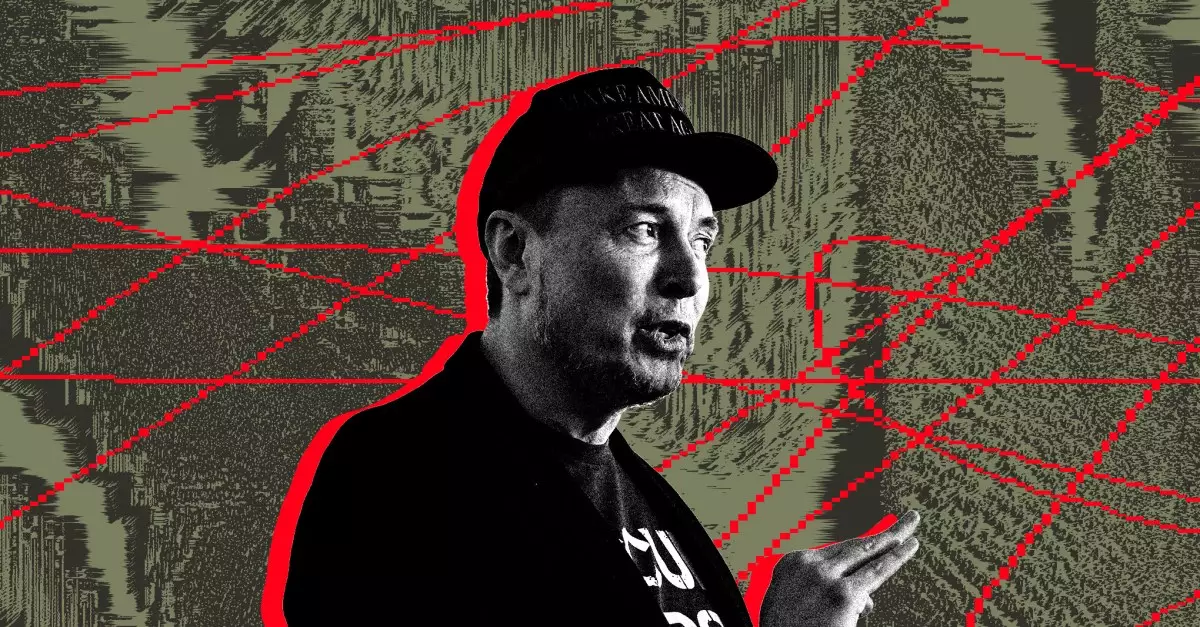In recent months, Tesla’s stock has seen a staggering decline, dropping nearly 50% since December. This sharp reduction in market value has raised eyebrows and sparked concern among investors and employees alike. At a recent all-hands-on meeting in Texas, Elon Musk, Tesla’s emblematic CEO, took to the stage to address these pressing issues. His objective was not only to bolster employee morale but also to instill confidence in Tesla’s long-term potential. Musk’s passionate appeal for employees to “hang on to your stock” reflected his attempt to maintain an unwavering belief in the company’s future, despite the troubling present.
The Manifesto of Innovation
Musk’s reassurances were not mere platitudes; they were laced with ambitious promises surrounding Tesla’s groundbreaking developments in technology. He cited forthcoming innovations such as the Cybercab robotaxi and the Optimus humanoid robot. During the meeting, he asserted that these projects represent the pinnacle of technological advancement, claiming, “It’s so profound, and there’s no comparison with anything in the past.” Such statements clearly aimed to provoke excitement and enthusiasm, serving as a motivational rallying point for the employees whose confidence has begun to wane amid the stock downturn.
However, one must critically analyze whether these grand ambitions are realistic. While the idea of producing 5,000 Optimus robots in the current year is audacious, it risks overshadowing the pressing need for regulatory compliance and operational feasibility. Tesla’s ambitious targets should be tempered with an understanding of the existing challenges related to technological development and the often unpredictable nature of consumer acceptance. Musk’s declaration of building “at least one legion of robots this year” challenges the boundaries of what is considered achievable, and raises questions about whether vision can outweigh operational limitations.
Manufacturing Miracles or Hollow Promises?
The manufacturing promises Musk made, including the development of a revolutionary process capable of producing a Cybercab in under five seconds, borders on the fantastical. While efficient manufacturing processes, such as gigacasting, are indeed game changers, the tech industry knows too well that execution is everything. The transition from innovative ideas to actual production processes is fraught with risk. Musk’s confident assertions may be uplifting, but they risk creating a disconnect between optimism and reality, potentially leading to disheartened stakeholders if expectations are unmet.
Moreover, what does it signify for a company when its CEO is forced to make public appearances solely to buoy morale? This trend reflects not just internal unease but also heightened scrutiny from analysts worried about Musk’s multitasking approach as he juggles numerous ventures, from SpaceX to Neuralink. His influence in politics and the often-turbulent landscape he has chosen to navigate only complicates perceptions of Tesla’s vision. As he quipped about having “like 17 jobs,” one cannot help but wonder if he is stretched too thin, diverting focus from what should be Tesla’s primary mission: revolutionizing personal and mass transportation through electric vehicles.
The Socio-Political Dynamic at Play
Amidst these corporate battles, Musk’s entanglement with political affairs cannot be ignored. Recently, concerns have arisen around his activities while heading the Department of Government Efficiency (DOGE), particularly regarding actions perceived as dismantling vital institutions. Striking a balance between corporate innovation and responsible political engagement has never been more critical. Employees at this gathering opted to forego inquiries about Musk’s political affiliations, perhaps fearful of broaching a controversial subject in light of a human resources crisis. This silence could either indicate a unity within the workforce or a deeper, unsettling concern about their leader’s direction.
In a period where public perception can shift dangerously, Tesla must tread carefully. Musk’s charm and ingenuity have been significant assets, but they alone cannot mitigate the risks associated with overreach—be it in product development timelines or political engagements. The path forward should embrace a realistic scope for aspirations while grounding them in productive, achievable goals.
Musk’s charisma and unabashed ambition keep him at the forefront of innovation discussions, but the ultimate measure of Tesla’s resilience, employee confidence, and investor faith will hinge on the company’s ability to transform bold visions into tangible realities.

